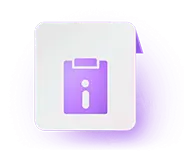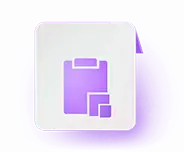CBSE Class 9 Hindi 2025: Hindi is one of the main subjects for students studying in CBSE Class 9. The Central Board of Secondary Education...

CBSE Class 9 Hindi 2025: Download Syllabus PDF
February 24, 2025
Bihar School Examination Board (BSEB) is one of the major and important state education boards in India. The board focuses on providing quality education to all students. Usually, the Bihar board Class 9 exams are conducted around February or March. Since students will appear for Class 10 after Class 9, they must keep their basics clear. Preparing for Class 9 will ensure that the student’s foundation is strong and they can prepare seamlessly for Class 10 exams.
Bihar Board conducts the Class 9 examination. Students will need to register for Class 10 in Class 9 itself. Furthermore, it is important that the students follow the syllabus so that they can start preparing for the exams. Class 9 is a turning point in the lives of all students. Students who wish to pursue further education in Bihar board and higher studies should consider going through all the materials. Scroll down to know more!
Since Bihar Board Class 9 is an important exam, students must ensure that they prepare for the exam accordingly. The Bihar board Class 9 exams are conducted every year. After being promoted to Class 9, the students will need to follow the guidelines set by the board so that they can appear for their Class 10 or matriculation exams. Students appearing for the Class 9 exams will need to follow the rules and regulations of the board so that they can score higher marks in the exams without any penalty. Students can learn more about the Bihar board exams from the table given below.
| Particulars | Details |
|---|---|
| Conducting Body Name | Bihar Secondary Education Board (BSEB) |
| Examination Name | Bihar Board Class 9 Exam |
| Date of Exam | February 24, 2023 |
| Level of Examination | Matriculate |
| Frequency | Annual |
| Session | 2022-23 |

The Bihar board Class 9 syllabus is vast and has all the necessary concepts. Students appearing for the Bihar board Class 9 exams should have an in-depth knowledge about all the topics. Students specially need to focus on Maths and Science subjects many students find them difficult. These subjects are crucial and ensure that the students score higher marks in the examination. For the convenience of students, we are providing the BSEB Class 9 syllabus below. Students can refer to this syllabus and accordingly plan their study routine.
Maths requires clarity and understanding of the basics. Therefore, it is important that the students in Bihar board Class 9 practice the Maths syllabus carefully. This plays an important role in ensuring they can score significantly higher marks in the exams. Given below is the Maths syllabus for Bihar board Class 9:
| Chapter Number | Chapter Name |
|---|---|
| 1 | Number Systems |
| 2 | Polynomials |
| 3 | Coordinate Geometry |
| 4 | Linear Equations in Two Variables |
| 5 | Introduction To Euclid’s Geometry |
| 6 | Lines and Angles |
| 7 | Triangles |
| 8 | Quadrilaterals |
| 9 | Area of Parallelograms and Triangles |
| 10 | Circles |
| 11 | Constructions |
| 12 | Heron’s Formula |
| 13 | Surface Areas and Volumes |
| 14 | Statistics |
| 15 | Probability |
Since Science is one of the most crucial subjects for students in Class 9, they must ensure that they are familiar with the entire chapter. In the table below, we have provided the Bihar Board Class 9 Science Syllabus 2023 which can be extremely beneficial for the students.
| Chapter Number | Chapter Name |
|---|---|
| 1 | Matter In Our Surroundings |
| 2 | Is Matter Around Us Pure? |
| 3 | Atoms and Molecules |
| 4 | Structure of Atoms |
| 5 | The Fundamental Unit of Life |
| 6 | Tissues |
| 7 | Diversity in Living Organisms |
| 8 | Motion |
| 9 | Force and Laws of Motion |
| 10 | Gravitation |
| 11 | Work and Energy |
| 12 | Sound |
| 13 | Why Do We Fall Ill? |
| 14 | Natural Resources |
| 15 | Improvement in Food Resources |

Bihar board is one of the most important state boards that prepares the students for a lot. It is crucial that students in the Bihar board are familiar with the process and eventually apply for the learning. Relying on the Bihar board study plan can therefore be a great way to prepare for Class 9. Furthermore, the students will also be able to clarify their doubts when they have scheduled their learning path.
Students willing to pass in the BSEB Class 9 exam need to ensure that they are familiar with the tips. However, following a proper preparation tip will ensure that the students have the capacity to memorise the concepts easily. It also plays an important role in clarifying the doubts. Given below are basic study tips that will be extremely helpful for the students to prepare for the exams:
A detailed study plan is the key way to prepare for the exams. Students in BSEB Class 9 need to ensure that they complete all the subjects. They must check the details and follow the planned subjects. Students will be appearing for the final exams. Therefore they must prepare and eventually follow the learning accordingly.

Given below are some of the frequently asked questions on Bihar Board Class 9 exams:
Q: Should I use NCERT books for Bihar Board exam preparation?
Ans: Students preparing for Bihar Board Class 9 exams should be using NCERT books as reference material and primarily focus on their textbooks.
Q. What does BSEB stand for?
Ans: The full form of BSEB in Bihar Secondary Education Board.
Q. When is Bihar Board Class 9 exams?
Ans: Bihar Board Class 9 exams will be conducted from February 24, 2023.
Q. Where can I find the Bihar Board Class 9 syllabus?
Ans: Students can find the Bihar Board Class 9 syllabus on this page.
Q What is the passing marks for BSEB Class 9?
Ans: The passing marks of BSEB Class 9 is 33%.

Bihar’s schools is spread across the 38 districts of Bihar. The Bihar School Examination Board usually regulates government schools (BSEB). In Bihar, English and Hindi are the most commonly studied languages in schools. Bihar is often known for being the Centre of Learning. Approximately, there are more than thousands of Bihar board affiliated schools in Bihar. Hence, below we have provided some of the schools affiliated to Bihar Board:
| List of Schools in Bihar | Ownership Wise | Location |
|---|---|---|
| Govt D A V Centenary Public School, Kabir Math, Siwan | Government | Kabir Math, Siwan |
| Govt Gyan Niketan, Vitthal Vihar, Patna | Government | Vitthal Vihar, Patna |
| Govt Shanti Niketan Awasiya Bal Vidyalaya, Shantinagar, Muzaffarpur | Government | Shantinagar, Muzaffarpur |
| Araria Public School (APS) | Private | Araria |
| B.L. Indo, Anglian Public School, Aurangabad | Private | Aurangabad |
| Holy Cross, Donar, Darbhanga | Private | Darbhanga |
| Govt Creane Memorial High School, Katari Hill Road, Gaya | Government | Katari Hill Road, Gaya |
| Rajkaya Madhya Vidyalaya, Samera | Government | Samera |
| Rajkaya Madhya Vidyalaya, Kabela | Government | Kabela |
| Govt St. Dominic Savio’s High School, North Srikrishnapuri, Patna | Government | Patna |

Over the years, there have been significant developments especially in terms of education. Students in Bihar board Class 9 may wish to appear in different competitive exams. It is crucial that the students follow the learning scheme so that they can refer to the materials. There are different competitive exams conducted in India. Therefore, it is crucial that the students prepare for the competitive exams accordingly.
The following are some of the most important competitive exams for students in Bihar Board Class 9.
General Competitive Exams